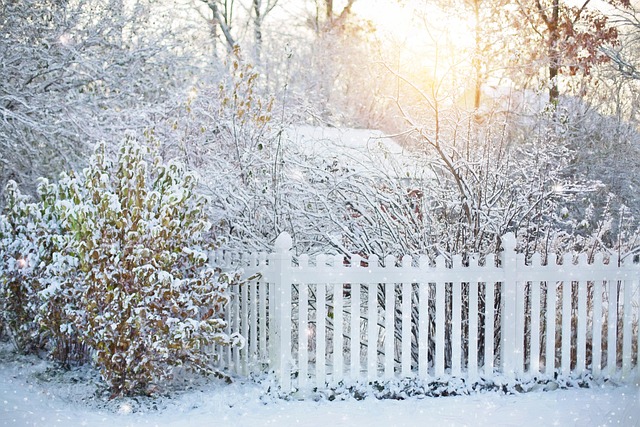In coastal regions, where harsh weather conditions and saltwater exposure are prevalent, choosing the right fencing material is paramount. This article explores the benefits of durable wooden fencing as a resilient and aesthetically pleasing option for your coastal property. We delve into the unique challenges of coastal fencing, highlighting why treated wood excels in these environments. Additionally, we provide expert guidance on material selection, installation best practices, and maintenance strategies to ensure your fence stands the test of time against the relentless coastal backdrop.
- Understanding Coastal Fencing Challenges
- Benefits of Durable Wooden Fencing
- Material Selection for Saltwater Resistance
- Installation Tips for Longevity
- Maintenance Strategies to Preserve Your Fence
Understanding Coastal Fencing Challenges
Coastal areas present unique challenges when it comes to fencing due to their harsh, often unpredictable environments. Salty sea air, strong winds, and frequent exposure to moisture can significantly impact traditional fence materials over time. This is particularly problematic as coastal properties often boast stunning views, making the need for aesthetically pleasing fencing even more critical.
The primary challenge lies in selecting a material that can withstand these conditions while maintaining its structural integrity and visual appeal. Traditional wooden fences may rot or warp under such circumstances, leading to costly repairs or replacements. Thus, choosing a durable wood species that has natural resistance to rot and moisture is essential for any coastal fencing project.
Benefits of Durable Wooden Fencing
Durable wooden fencing offers a range of benefits for coastal areas, where traditional materials may struggle to withstand harsh weather conditions. First and foremost, its longevity is unparalleled. Treated woods like cedar or pressure-treated pine can last for decades with minimal maintenance, outliving many other fencing options. This durability not only saves homeowners from frequent replacements but also reduces construction waste, making it an environmentally friendly choice.
Moreover, these fences provide excellent protection against coastal elements such as high winds, salt spray, and erosion. The robust nature of the wood ensures that it can resist the powerful forces often experienced along coastlines, keeping your property secure and private. Additionally, wooden fencing allows for customization in terms of style and design, offering a more aesthetically pleasing alternative to concrete or metal barriers, enhancing the overall curb appeal of coastal homes.
Material Selection for Saltwater Resistance
When considering fencing for coastal areas, material selection is paramount to ensure longevity against harsh environmental conditions. For durability and saltwater resistance, wood should be at the top of the list. Opting for treated or weather-resistant wooden fence posts and boards can significantly enhance their lifespan in such environments.
Treated wood, typically pressure-treated with chemicals, offers superior protection against rot, fungi, and moisture, which are prevalent in coastal regions. This treatment also improves its resistance to saltwater, preventing the wood from becoming brittle or disintegrating over time. As a result, these treated wooden fencing materials can withstand the relentless wind, rain, and salty air of coastal areas for many years, providing a robust and aesthetically pleasing solution for property owners.
Installation Tips for Longevity
When installing durable wooden fencing in coastal areas, there are several tips to ensure longevity. First, prepare the ground properly by addressing drainage issues. Sandy or clay soils can cause wood to rot, so levelling and adding a proper base is essential. Ensure the posts are set deep enough into the ground; at least a third of their height should be underground to withstand wind and moisture.
Use high-quality treated timber suitable for outdoor and coastal conditions. Apply a water-repellent barrier or stain after installation to protect against salt air and frequent rainfall. Regular cleaning and inspection will also help identify any signs of damage early on, allowing for prompt repair or replacement of affected sections.
Maintenance Strategies to Preserve Your Fence
Regular cleaning and maintenance are essential to keep your wooden fence in pristine condition, especially in coastal areas where it faces constant exposure to salt air and moisture. A simple yet effective strategy is to sweep or brush away any sand, salt, or debris that accumulates on the fence regularly. This prevents these substances from settling into the wood’s pores and causing damage over time. Using a soft-bristled brush or a garden hose with a gentle spray setting can help remove dirt without causing scratch marks.
Additionally, applying a fresh coat of water-repellent sealer or stain every few months will create a protective barrier against moisture. This step is crucial to prevent rot and ensure the fence’s longevity. Remember to choose products specifically designed for exterior use and consider the coastal environment when selecting your sealants or stains. Proper maintenance not only enhances the visual appeal but also strengthens the fence, making it more durable against harsh weather conditions.
